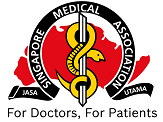Staging of colorectal cancer using contrast-enhanced multidetector computed tomographic colonography
Narayanan S, Kalra N, Bhatia A, Wig JD, Rana S, Bhasin D, Vaiphei K, Khandelwal N
Correspondence: Dr Naveen Kalra, navkal2004@yahoo.com
ABSTRACT
INTRODUCTION Preoperative staging is essential for the optimal treatment and surgical planning of colorectal cancers. This study was aimed to evaluate the accuracy of colorectal cancer staging done using contrast-enhanced multidetector computed tomographic colonography (CEMDCTC).
METHODS We recruited 25 patients with 28 proven colorectal cancers. A 16-slice multidetector computed tomography scanner was used to generate two-dimensional multiplanar reformatted sagittal, coronal and oblique coronal images, and three-dimensional virtual colonography (endoluminal) images. Axial and reformatted views were analysed, and TNM staging was done. Patients underwent surgery and conventional colonoscopy, and surgical histopathological correlation was obtained.
RESULTS The diagnostic accuracies for TNM colorectal cancer staging were 92.3% for T staging, 42.3% for N staging and 96.1% for M staging using CEMDCTC. There was excellent positive correlation for T staging between CEMDCTC and both surgery (κ-value = 0.686) and histopathology (κ-value = 0.838) (p < 0.0001), and moderate positive correlation for N staging between CEMDCTC and surgery (κ-value = 0.424; p < 0.0001). The correlation between CEMDCTC and histopathology for N staging was poor (κ-value = 0.186; p < 0.05); the negative predictive value was 100% for lymph node detection. Moderate positive correlation was seen for M staging between CEMDCTC and both surgery (κ-value = 0.462) and histopathology (κ-value = 0.649). No false negatives were identified in any of the M0 cases.
CONCLUSION CEMDCTC correlated well with pathologic T and M stages, but poorly with pathologic N stage. It is an extremely accurate tool for T staging, but cannot reliably distinguish between malignant lymph nodes and enlarged reactive lymph nodes.
Keywords: colonography, colorectal cancer, contrast-enhanced multidetector computed tomographic colonography
Singapore Med J 2014; 55(12): 660-666; http://dx.doi.org/10.11622/smedj.2014182
REFERENCES
| 1. Jemal A, Siegel R, Ward E, et al. Cancer statistics, 2009. CA Cancer J Clin 2009; 59:225-49. http://dx.doi.org/10.3322/caac.20006 | ||||
| 2. Macdonald JS. Adjuvant therapy of colon cancer. CA Cancer J Clin 1999; 49:202-19. http://dx.doi.org/10.3322/canjclin.49.4.202 | ||||
| 3. Compton CC, Greene FL. The staging of colorectal cancer: 2004 and beyond. CA Cancer J Clin 2004; 54:295-308. http://dx.doi.org/10.3322/canjclin.54.6.295 | ||||
| 4. Fenlon HM, McAneny DB, Nunes DP, Clarke PD, Ferrucci JT. Occlusive colon carcinoma: virtual colonoscopy in the preoperative evaluation of the proximal colon. Radiology 1999; 210:423-8. http://dx.doi.org/10.1148/radiology.210.2.r99fe21423 | ||||
| 5. Ahmad NA, Kochman ML, Ginsberg GG. Endoscopic ultrasound and endoscopic mucosal resection for rectal cancers and villous adenomas. Hematol Oncol Clin North Am 2002; 16:897-906. http://dx.doi.org/10.1016/S0889-8588(02)00038-2 | ||||
| 6. Minagawa M, Yamamoto J, Miwa S, et al. Selection criteria for simultaneous resection in patients with synchronous liver metastasis. Arch Surg 2006; 141:1006-12. http://dx.doi.org/10.1001/archsurg.141.10.1006 | ||||
| 7. Beets-Tan RG, Beets GL. Rectal cancer: review with emphasis on MR imaging. Radiology 2004; 232:335-46. http://dx.doi.org/10.1148/radiol.2322021326 | ||||
| 8. Rydberg J, Buckwalter KA, Caldemeyer KS, et al. Multisection CT: scanning techniques and clinical applications. Radiographics 2000; 20:1787-806. http://dx.doi.org/10.1148/radiographics.20.6.g00nv071787 | ||||
| 9. Chung DJ, Huh KC, Choi WJ, Kim JK. CT colonography using 16-MDCT in the evaluation of colorectal cancer. AJR Am J Roentgenol 2005; 184:98?103. http://dx.doi.org/10.2214/ajr.184.1.01840098 | ||||
| 10. Iannaccone R, Laghi A, Passariello R. Colorectal carcinoma: detection and staging with multislice CT (MSCT) colonography. Abdom Imaging 2005; 30:13-9. http://dx.doi.org/10.1007/s00261-004-0245-9 | ||||
| 11. Fillippone A, Ambrosini R, Fuschi M, et al. Preoperative T and N staging of colorectal cancer: accuracy of contrast-enhanced multi-detector row CT colonography--initial experience. Radiology 2004; 231:83-90. http://dx.doi.org/10.1148/radiol.2311021152 | ||||
| 12. Taylor SA, Halligan S, Goh V, et al. Optimizing colonic distention for multi-detector row CT colonography: effect of hyoscine butylbromide and rectal balloon catheter. Radiology 2003; 229:99-108. http://dx.doi.org/10.1148/radiol.2291021151 | ||||
| 13. Chen SC, Lu DS, Hecht JR, Kadell BM. CT colonography: value of scanning in both the supine and prone positions. AJR Am J Roentgenol 1999; 172:595-9. http://dx.doi.org/10.2214/ajr.172.3.10063842 | ||||
| 14. Zalis ME, Barish MA, Choi JR, et al. CT colonography reporting and data system: a consensus proposal. Radiology 2005; 236:3-9. http://dx.doi.org/10.1148/radiol.2361041926 | ||||
| 15. Kalra N, Suri S, Gupta R, et al. MDCT in the staging of gallbladder carcinoma. AJR Am J Roentgenol 2006; 186:758-62. http://dx.doi.org/10.2214/AJR.04.1342 | ||||
| 16. Fletcher JG, Johnson CD, Welch TJ, et al. Optimization of CT colonography technique: prospective trial in 180 patients. Radiology 2000; 216:704-11. http://dx.doi.org/10.1148/radiology.216.3.r00au41704 | ||||
| 17. Sosna J, Morrin MM, Kruskal JB, et al. Colorectal neoplasms: role of intravenous contrast-enhanced CT colonography. Radiology 2003; 228:152-6. http://dx.doi.org/10.1148/radiol.2281020950 | ||||
| 18. Morrin MM, Farrell RJ, Kruskal JB, et al. Utility of intravenously administered contrast material at CT colonography. Radiology 2000; 217:765-71. http://dx.doi.org/10.1148/radiology.217.3.r00nv42765 | ||||
| 19. Bhatia A, Saxena AK, Kalra N, et al. Intravenous contrast enhanced computed tomography colonoscopy in children with suspected colonic polyps. Eur J Radiol 2013; 82:905-12. http://dx.doi.org/10.1016/j.ejrad.2012.12.017 | ||||


